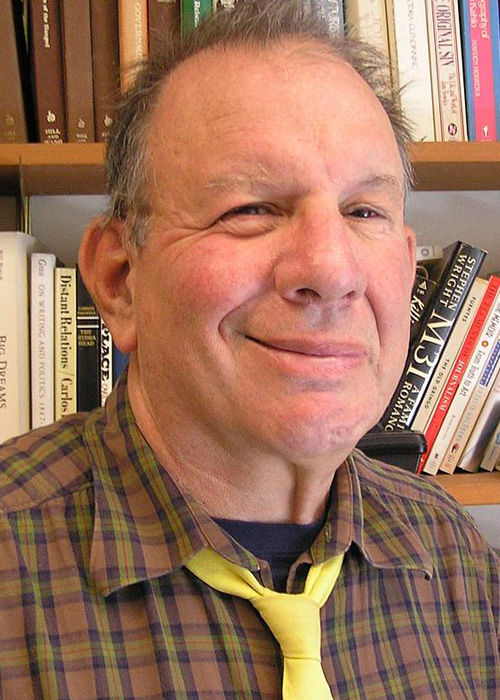Sebastopol’s nationally renowned, MD, Jeff Hergenrather has been recommending cannabis for all kinds of ailments ever since he served as the doctor at “The Farm,” a rural countercultural community in Tennessee 40 years ago.
For the past 20 years, he has seen thousands of patients in his Sebastopol office where he has recommended cannabis for the sick and the infirm, and gained a reputation as a healer, a good neighbor and good friend.
I met him 10 years ago when he told me, “I do all the things that a family doctor would do: take blood pressure and pulse and listen to the heartbeat.”
Later, I included him in my book, Marijuanaland.
To audiences from Sydney, Australia to Raleigh, North Carolina and St. Louis, Missouri, where he is invited to speak, he explains that cannabis works for a great many of his patients who have trouble eating and sleeping, and that cannabis is revered in Sonoma County by the young, the old and those in-between, including users sometimes referred to as “heads” and “stoners.”
Hergenrather is quick to point out that many of the stereotypes about marijuana users became obsolete a long ago, except among some police officers who have viewed cannabis as a dangerous drug.
These days, Hergenrather sees new patients, both old and young, who are trying cannabis for the first time. Not surprisingly, he provides instruction on how to administer it.
“New patients,” he says, “often use sprays, tinctures and gummies, though after experimenting, they sometimes prefer the old tried-and-true method: smoking marijuana cigarettes.”
Purchasing cannabis in Sonoma County is a lot easier and safer too, than it was during the height of the War on Drugs, which was for the most part a war on people who were jailed by the tens of millions, across the U.S.
Marijuana is available at dispensaries in Sebastopol, Santa Rosa and Cotati, as well as on the black market, though finding a reliable source can be a challenge for those who can’t drive or don’t have access to public transportation.
Sadly, cannabis is also relatively expensive, especially for those on fixed incomes and for college students.
“Many people can’t afford to purchase the cannabis I recommend,” Hergenrather says. “It’s not in the budget.”
Those who can afford to buy it often sample an assortment of products and perform experiments on themselves.
“Users adopt trial and error,” Hergenrather explains. “They see what works best and what doesn’t work as well, and then they’re pretty good at sticking to it.”
Indeed, like patients who deal, for example, with diabetes, cannabis users sometimes become experts on the impact of cannabis on their bodies and minds.
”If you’re new to cannabis, it can take a while to acquire the tolerance and the cognitive skills that help navigate the experience that can sometimes alter one’s sense of time and space,” Hergenrather says. “If you use marijuana on a full stomach it may take longer to kick in than if your stomach is empty. Mood can also be a factor.”
Cannabis receptors located in the brain, and elsewhere in the body, recognize cannabis compounds and absorb them quickly. “When cannabis is taken orally, it goes through the liver and then circulates throughout the whole body,” Hergenrather explains.
As he knows, we’re a lot better informed today about cannabis than we were in the 1960s, when hippies smoked it, though it was then widely demonized. Unfortunately, “The LaGuardia Report,” which was published in 1944, showed that ordinary New Yorkers smoked reefer, and that with few exceptions didn’t behave differently and weren’t more inclined to criminality, than citizens who avoided it.
Then, in 1972, the “National Commission on Marihuana and Drug Abuse” reported to President Nixon that cannabis users were indistinguishable from non-users.
“History would have been a lot different if we had heeded those reports from 1944 and 1972,” Hergenrather says.
His knowledge of history makes him a compelling speaker. Moreover, his talks carry weight because he’s not a salesman for cannabis products and brands and isn’t employed by a dispensary or manufacturing company, though he has had offers to serve as a consultant.
“I like to be squeaky clean,” he says.
While he’s not a botanist, he knows enough about cannabis botany to talk intelligently about phenotypes and genotypes and to see through urban legends about marijuana.
“For decades, growers and users insisted that cannabis sativa and cannabis indica were two distinct species,” he says. “Now, there are plants that look like sativa and act like indica and vice-versa.” Indeed, it’s complicated and likely to become even more so.
Hergenrather adds that it’s essential for patients to know the THC and the CBD content of the marijuana they use. The former tends to be psychoactive, the later not.
“Eating cannabis can last a whole lot longer than smoking it,” he says. “You might think twice before eating a high-THC marijuana brownie and being stoned for hours.”
Then, again, perhaps getting stoned is precisely what you want.
Jonah Raskin, a professor emeritus at Sonoma State University, is the author of Marijuana: Dispatches from an American War, published in French as well as English, and shares story credit for the feature length pot film Homegrown.








